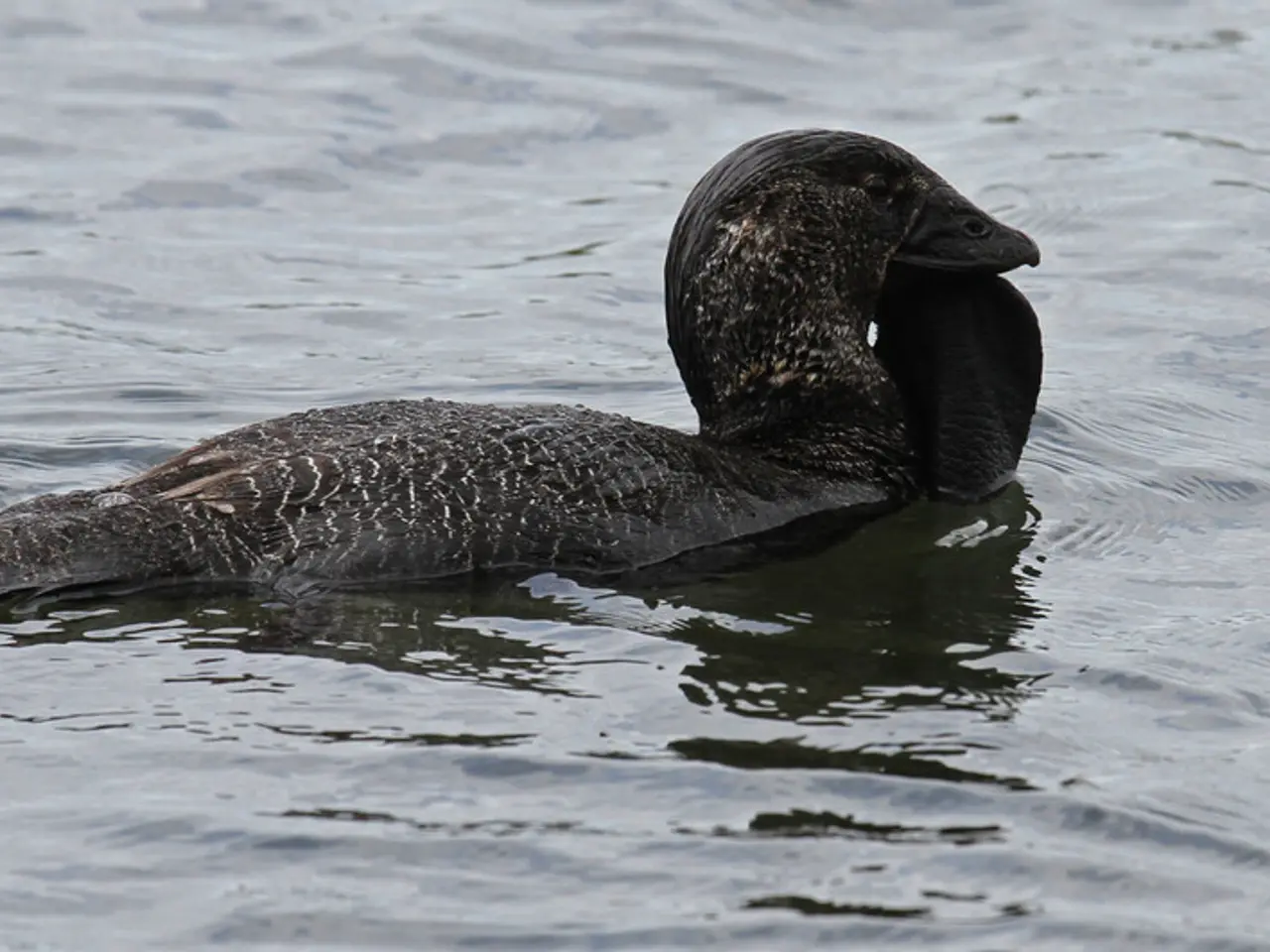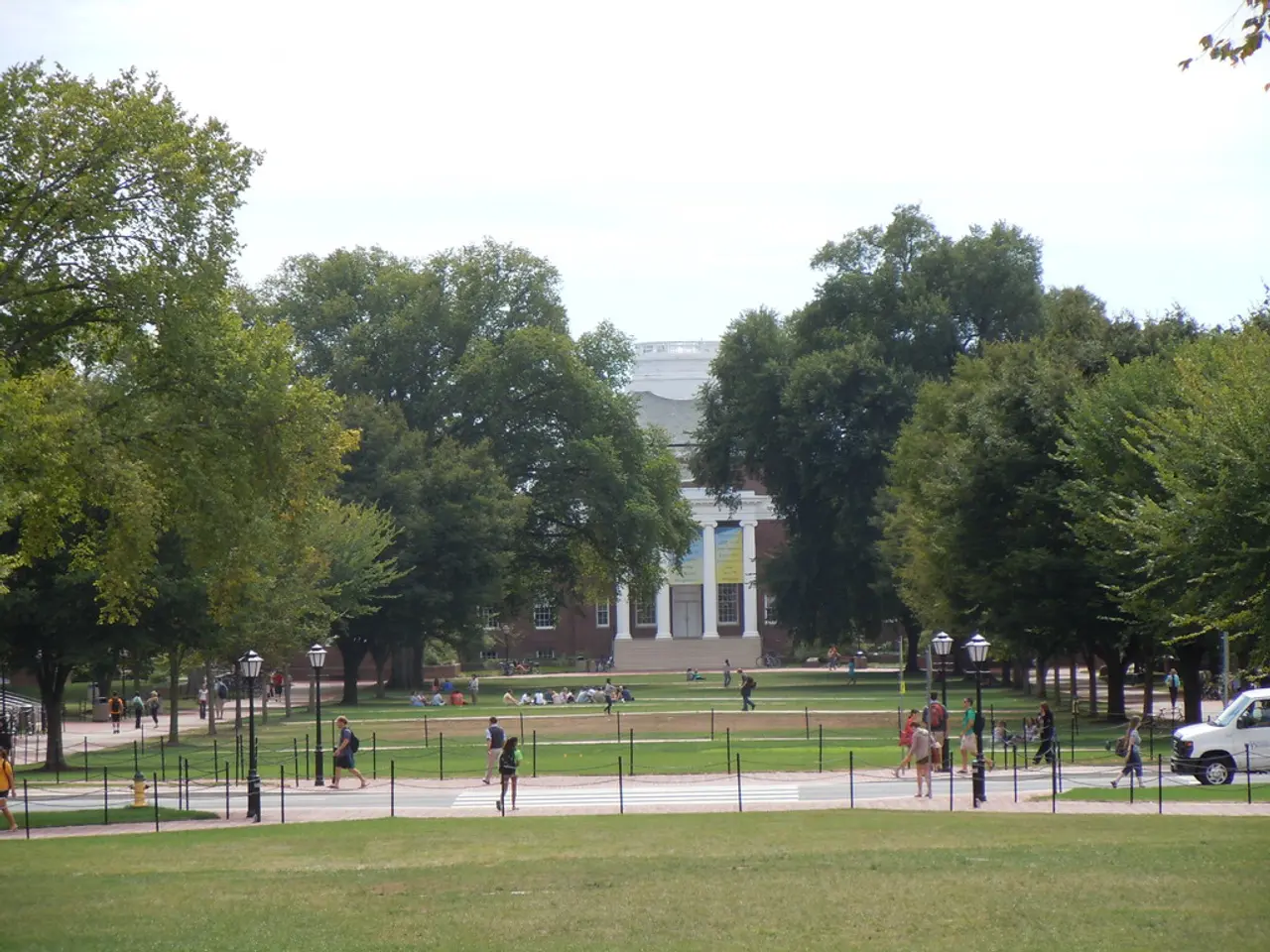The Enigmatic Black-Crowned Night Heron Protecting Marshlands Mysteries
The Black-Crowned Night Heron (Nycticorax nycticorax), a medium-sized heron with a distinctive appearance, is a fascinating creature that can be found in wetlands across the globe, excluding Australia and Antarctica.
This bird is easily recognisable by its black crown, back, and white nape, grey body, wings, and tail. During the breeding season, adult herons sport long white plumes extending from the back of their heads. Juveniles, on the other hand, are covered in brown feathers with whitish or buff streaking, and have yellow eyes instead of the adults' red ones.
Black-crowned night herons are carnivorous wading birds that primarily feed on fish, amphibians, crustaceans, insects, and small reptiles. They are known to opportunistically consume small mammals, eggs or nestlings of other birds, and occasionally small mammals. Their diet reflects their adaptability to diverse prey in their environment.
These birds are mostly nocturnal, feeding during the evening or early morning to avoid competition and use stealthy tactics. They can often be heard making a distinct and eerie sound, often described as a loud "quawk" or "wok."
Black-crowned night herons breed colonially and often nest near or with other waterbirds. The breeding season varies by region but generally occurs during warmer months. Females lay 3-5 pale blue-green eggs, which are incubated for 24-26 days by both parents.
In some colonies, cooperative breeding occurs, with older siblings or unrelated adults helping raise the young. This behaviour is not common but adds to the intrigue of these mysterious birds.
Wetland destruction and drainage, pollution and water contamination, human disturbance near nesting areas, and climate change are challenges affecting local populations of black-crowned night herons. However, conservation measures like wetland protection and wildlife sanctuaries have helped maintain stable populations in many regions.
The black-crowned night heron plays a vital role as a top predator in wetland ecosystems, helping to control populations of amphibians and fish. They also serve as bioindicators of wetland health, providing valuable insights into the health of these crucial habitats.
Culturally, the black-crowned night heron has a mystical reputation, symbolising purity and patience in East Asian traditions. This enigmatic bird continues to captivate and fascinate those who encounter it, making it a worthy addition to any birdwatcher's list.
To successfully spot a black-crowned night heron, visit at dusk or dawn, search shallow waters, look for key features, use binoculars, approach quietly, and explore urban parks. With patience and a keen eye, you may just catch a glimpse of this elusive and fascinating creature.
The black-crowned night heron is currently classified as Least Concern by the IUCN, indicating a stable and widespread population. However, continued efforts in conservation are necessary to ensure the survival of this remarkable bird for future generations to enjoy.
Engaging in bird photography can provide an opportunity to capture the intricate details of a Black-Crowned Night Heron, from its black crown and white nape to its long white plumes during the breeding season. This hobby can be part of one's education-and-self-development journey, fostering an appreciation for the world's diverse wildlife and the critical role these creatures play in ecosystems.
By participating in birdwatching, particularly at dusk or dawn, avid photographers can contribute to conservation efforts, as documentation and data collection about these birds help researchers to better understand their behavior and threats they face, aiding in their ongoing protection.




